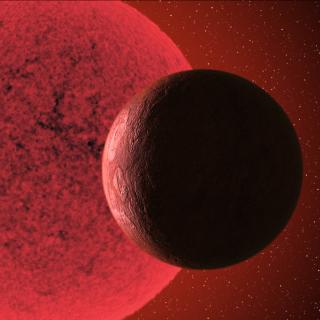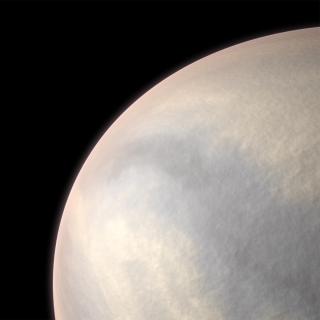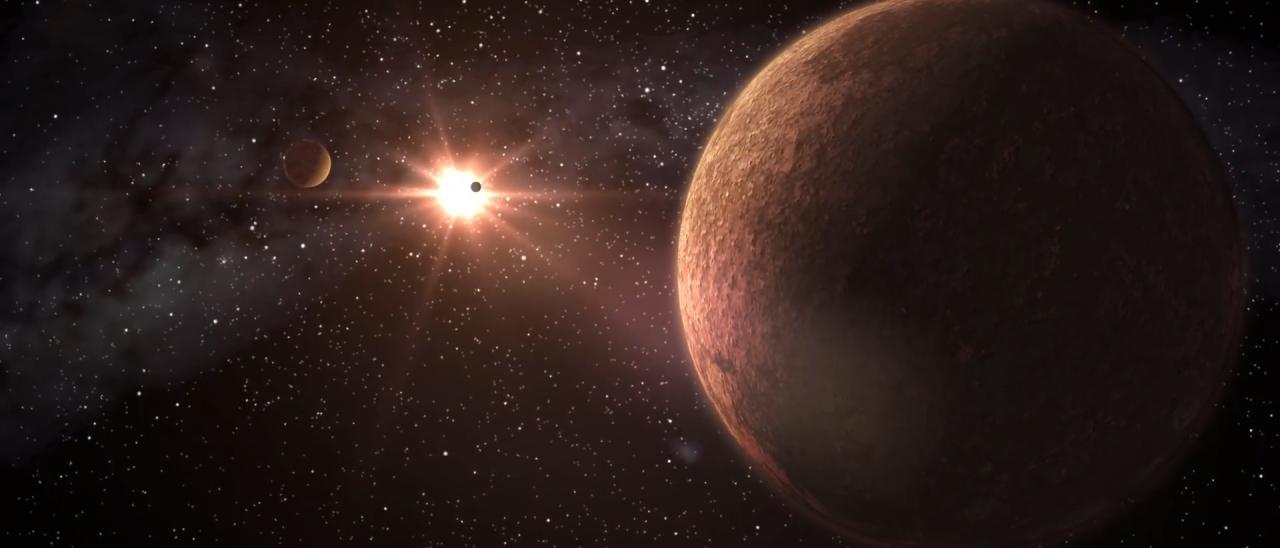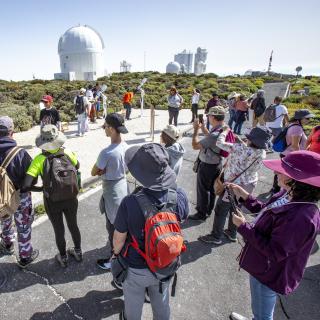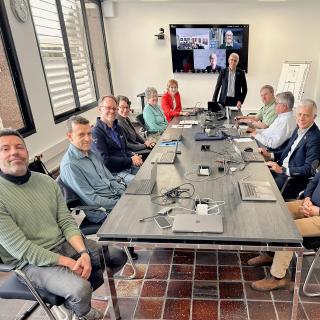An international research, in which the Instituto de Astrofísica de Canarias (IAC) participates, has discovered a new planetary system comprised of 4 planets orbiting the star TOI-500. This is the first system known to host an Earth analogue with a period shorter than one day and 3 additional low-mass planets whose orbital configuration can be explained via a non-violent and smooth migration scenario. The study is published in the journal Nature Astronomy.
The inner planet, dubbed TOI-500b, is a so-called ultra-short period (USP) planet, as its orbital period is only 13 hours. It is regarded as an Earth analogue, that is, an Earth-like rocky planet with radius, mass, and density comparable to those of our planet. "In contrast to Earth, though, its proximity to the star makes it so hot (about 1350 °C) that its surface is most likely an immense expanse of lava," says Luisa Maria Serrano, researcher at the of the Physics Department of the University of Turin and first author of the paper. The new planet could be a true reflection of what the Earth will look like in the future, when the Sun becomes a red giant star, much bigger and brighter than it is now.
TOI-500b was initially identified as a planet candidate by NASA’s Transiting Exoplanet Survey Satellite (TESS), a space telescope designed to look for planets in orbit around nearby bright stars using the transit method. This method measures the minute decrease of the brightness of a star as the planet crosses the stellar disk as seen from the telescope. TOI-500b was subsequently confirmed thanks to a one-year-long observing campaign carried out by the University of Turin with the HARPS spectrograph at the European Southern Observatory (ESO).
The analysis of the TESS and HARPS data has provided precise measurements of the mass, radius, and orbital parameters of the inner ultra-short period planet TOI-500b. "The HARPS measurements have also allowed us to detect 3 additional low-mass planets orbiting TOI-500 every 6.6, 26.2, and 61.3 days. TOI-500 is a remarkable planetary system, important for understanding the dynamical fate of planets," says Davide Gandolfi, researcher at the of the Physics Department of the University of Turin and co-author of the paper.
The novelty presented by the newly published paper lies in the migration process that led the planetary system to its current configuration. "It is commonly accepted that ultra-short period planets did not form in their current-day orbits, as the innermost regions of their natal protoplanetary disk have inadequate density and temperature to form planets. They must have originated further out and then migrated inwards close to their host star," says Hans J. Deeg, researcher at the IAC who participated in the study.
Although there is no consensus on the migration process, it is often believed to occur via a violent process, involving planet-planet scattering, which would shrink and excite the orbits of the planets. In their study the authors show that the planets orbiting TOI-500 may have always been on nearly circular orbits, and then migrated inwards following a so-called secular and quasi-static migration process that lasted about 2 billion years. "This is a quiet migration pattern, in which planets move slowly on orbits closer and closer to their star, without bumping into each other and without exiting their orbits," explains Felipe Murgas, researcher at the IAC and co-author of the paper.
"This paper demonstrates the importance of coupling the discovery of systems hosting USP planets with numerical simulations to test possible migratory processes that may have led them to their current orbital configuration," says Enric Pallé, researcher at the IAC and co-author of the article. "Acquiring data across a long time baseline makes it possible to unveil the inner architecture of systems similar to TOI-500 and understand how planets have settled into their orbits", conclude.
Article: Serrano, L.M., Gandolfi, D., Mustill, A.J. et al. A low-eccentricity migration pathway for a 13-h-period Earth analogue in a four-planet system. Nat Astron (2022). https://doi.org/10.1038/s41550-022-01641-y
Contact at the IAC:
Hans J. Deeg, hdeeg [at] iac.es (hdeeg[at]iac[dot]es)
Felipe Murgas, fmurgas [at] iac.es (fmurgas[at]iac[dot]es)
Enric Pallé, epalle [at] iac.es (epalle[at]iac[dot]es)

